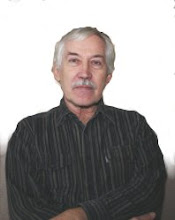Genetic drift is a statistical phenomenon: especially in a small population, some genotypes become more frequent, sometimes even dominant by pure chance, without any connection with their survival value. In the same way, some genotypes can be eliminated, when, for example, a storm destroys some nests of a tiny and isolated colony of birds. Such gene drift interferes with natural selection. Natural selection, as a force based on stochastic mutations, can do its work in a orderly manner in a big population where random changes balance one another.
There is a clear analogy to the gene drift in the cultural changes in human societies. Some such changes, some memes have a positive value, help the society to function in a more efficient and smooth way, minimizing the possibility of harm to its members, enhancing their happiness, creativity, etc. Some changes are harmful. In a big society, there are more changes, more innovations, but each of such innovations has a smaller effect on the society as a whole. In a small society some innovations can influence the behaviour of the society as a whole. It means also that single persons can more easily become influential in a small society. The culture of a small nation can more easily be influenced by a strong personality. I think we can find good examples of such influential personalities in Estonian culture. I can mention the “language engineer” Johannes Aavik who introduced into the standard Estonian several dozen memes, new words of his own creation and some grammatical forms. There are other examples. Some scientists have had an exceptionally great influence on the development of biology, physics or philology here. Botanical studies in Estonia on the second half of the Xxth century wouldn't have been what they were without the works of the great botanist, one of the great figures of plant sociology, professor Teodor Lippmaa. The fenno-ugric studies developed under the aegis of Paul Ariste, our oriental studies have been shaped by the influence of two major scholars – Linnart Mäll and Rein Raud. The problem is that such leader figures in their respective fields can be broad-minded and tolerant, but sometimes this is not the case. Then, their authority can become an obstacle, they become gurus, their students become their disciples more or less blindly accepting their ideas and attitudes. There are simply no other persons of similar authority, no good colleagues, no rivals, no adequate criticism of their achievements.
Could we also find analogies of such a situation in Estonian politics? I hesitate to answer, but my tentative answer is no. Despite all the fuss and noise around politics, it still has a definite survival value, and no politician is capable of monopolizing the scene here. However, in politics too, some ideas, some memes can become influential more by chance than by their real value, and as such, shape to a significant degree, the life of our society. One such idea is the neo-liberalist ideology imported and spread in Estonia by some active supporters of Milton Friedman, although these people had little understanding of Friedman's work in economics. But thanks to the activity of our Friedmanian politicians, Estonia is now a kind of an experiment in neo-liberal economy and politics. So far this experiment has been successful, despite some very serious problems on the horizon. But as such, the Estonian experiment can serve as a good or bad example for other nations, even for the bigger ones where different views and their proponents to a much greater degree balance one another, creating a society more based on the aurea mediocritas.
samedi 6 novembre 2010
Inscription à :
Publier les commentaires (Atom)

Aucun commentaire:
Enregistrer un commentaire